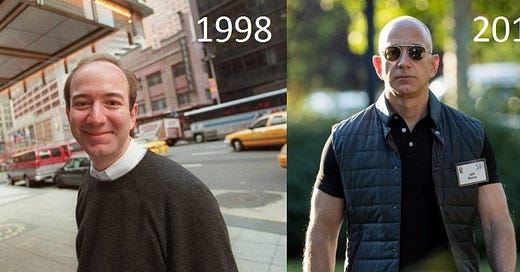Digitization is happening at different rates throughout the $8 trillion B2B distribution industry. Because of all the opportunities for digital commerce, it can be hard to prioritize what to really focus on. So, I think about a quote from Jeff Bezos:
“I very frequently get the question: 'What's going to change in the next 10 years?' And that is a very interesting question; it's a very common one. I almost never get the question: 'What's not going to change in the next 10 years?' And I submit to you that that second question is actually the more important of the two -- because you can build a business strategy around the things that are stable in time. ... [I]n our retail business, we know that customers want low prices, and I know that's going to be true 10 years from now. They want fast delivery; they want vast selection. It's impossible to imagine a future 10 years from now where a customer comes up and says, 'Jeff I love Amazon; I just wish the prices were a little higher,' [or] 'I love Amazon; I just wish you'd deliver a little more slowly.' Impossible.”
In B2B distribution, we’re seeing similar signs of what Jeff describes his retail consumers wanted: cheaper prices, faster deliveries and broader selection.
Of those three areas, the area of digitization that most frightens B2B distribution is the first one: cheaper prices.
This value proposition usually comes at the expense of the B2B distributor, not at the expense of the supplier.
In Amazon’s 1.0 marketplace, the consumer would get the cheapest price because myriad third-party sellers were competing for the “buy-box.”
In B2B distribution, there’s a similar dynamic occurring, just called something else: price comparisons.
Price comparisons are the bane of the B2B distributor. Pricing transparency is the margin killer that every vertical fears and every tech disruptor wants to provide. But, it’s harder said than done. Some verticals have fallen victim to price comparisons and some have successfully resisted while also embracing digitization.
A model for friendly Digital Commerce: Food Distribution
Embrace digitization while resisting price comparison? Some would think that’s an oxymoron! Thanks to food distribution, this dream has become a reality. And, could establish a North Star for the rest of B2B distribution verticals.
If you were a B2B distributor looking to digitize commerce with your customers, you’d want an eCommerce website and mobile app, you’d want an app for your customers to use, you’d want tools for your sales reps, a merchandisable digital product catalog with images and good product descriptions, and good ERP connectivity. And, now with AI, you’d want automated PO entry and to let customers make orders via voicemail or over email and the AI automatically reads it and enters it into your ERP.
Assuming the cost of the software is reasonable and the distributor doesn’t have to participate in a marketplace with active price comparisons, what distributor wouldn’t want all of those capabilities?!
This is exactly the model arising in food service distribution – so lets examine and dive in further.
No Global Search
The key indicator of whether or not a distributor is joining a marketplace is if a B2B customer (a restaurant in this example) can go into the website, search for a product like “Milk” or “eggs” – and then see inventory availability and pricing from multiple distributors all on the same page.
Instead, the distributor would prefer the customer should have to “click into the distributor” and then conduct their search and browsing process. This is what we call “no global search.”
Another example is Instacart – you can’t go into Instacart and build a shopping list of 5 items and then see a bunch of grocery stores offerings alongside each other. If you want to start building an order, you have to click into the grocery store and build out your shopping list within that store’s catalog.
Global search takes a lot of infrastructure to launch – it’s not an accidental feature that a tech company accidentally offers. The tech company has to standardize product data across all of its suppliers and create a 1-to-many matching. That is not a trivial undertaking.
The digital commerce tech companies in food service don’t offer global search, but they offer all the other capabilities I previously listed. However, it wasn’t always that way.
Why has food distribution been protected from price comparisons?
If you rewind a few years ago, some B2B food marketplaces were helping restaurants receive multiple quotes from competing food service distributors. In classic marketplace fashion, the marketplace tries to capitalize on the fragmented supply, creating efficiencies for the buyer to aggregate multiple bids from various suppliers. These marketplaces were effectively trying to create a B2B version of Amazon’s “buy box.” The key market dynamic for this to be possible was a fragmented supplier base of B2B distributors .





